New Zealand Simulation
This page describes a numerical simulation over New Zealand as an extension of the study
New Zealand.
Computational Domain
The computation grid shown below uses horizontal mesh spacings of 1km in a uniform region
near the surface. The vertical grid uses uniform spacing of 500 m to an altitude of 140 km.
Stretching of ~2% is used past the uniform regions to the edge of the domain in each direction.
The horizontal mesh is coarsened by a factor of 2 at three interfaces of altitudes
140, 200, 260 km. The resulting mesh at the top of the domain has a horizontal region with
spacings of 8km.
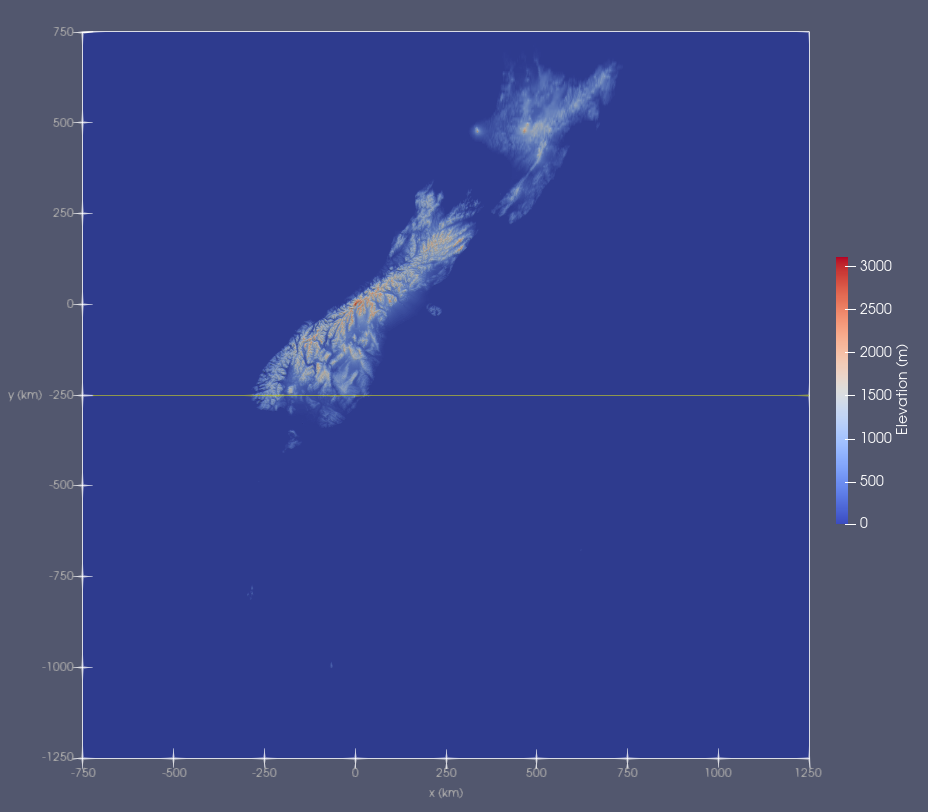
Wind Profiles
Thermodynamic profiles displayed for data point located at 45.5°S, 170°E.
This maps to (-11.2,-210.8) km in grid space, slightly SSE of Lauder (-36.8,-160.9).







Forcing







Forcing
A hyperbolic tangent forcing function gradually introduces winds near the surface with the
objective of achieving the wind profile within a two hour period.
The following animations start at the end of the ramping period.

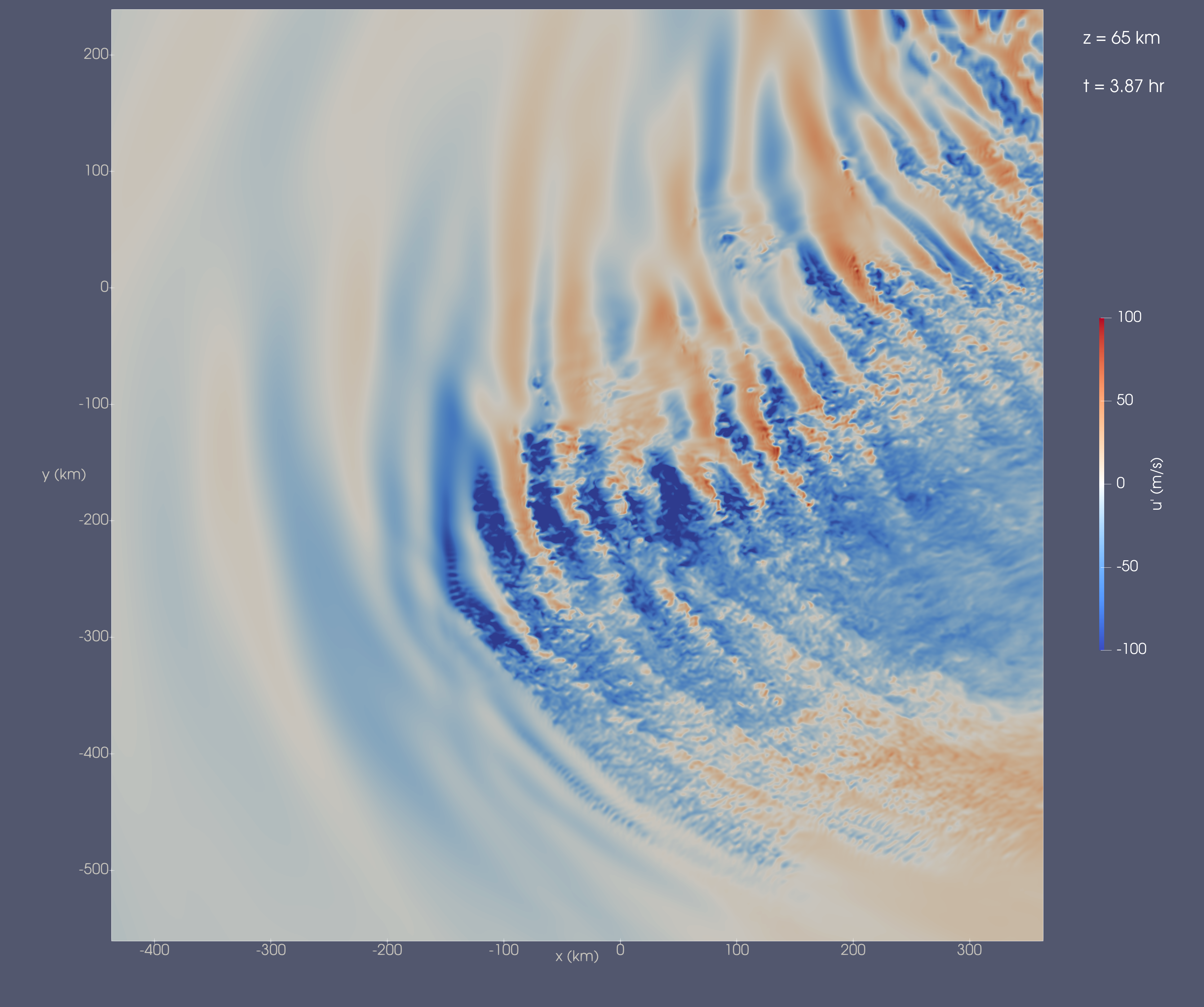

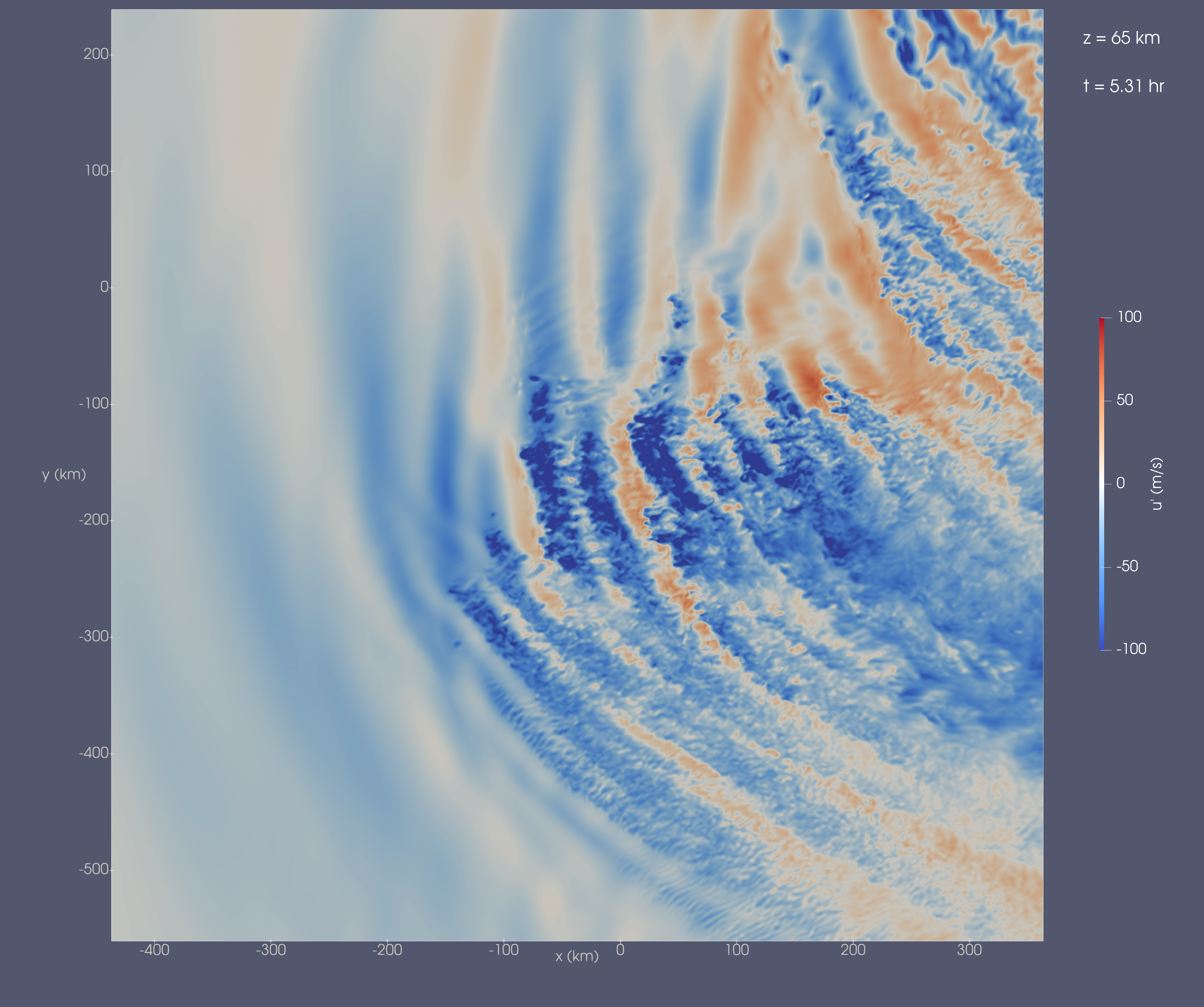
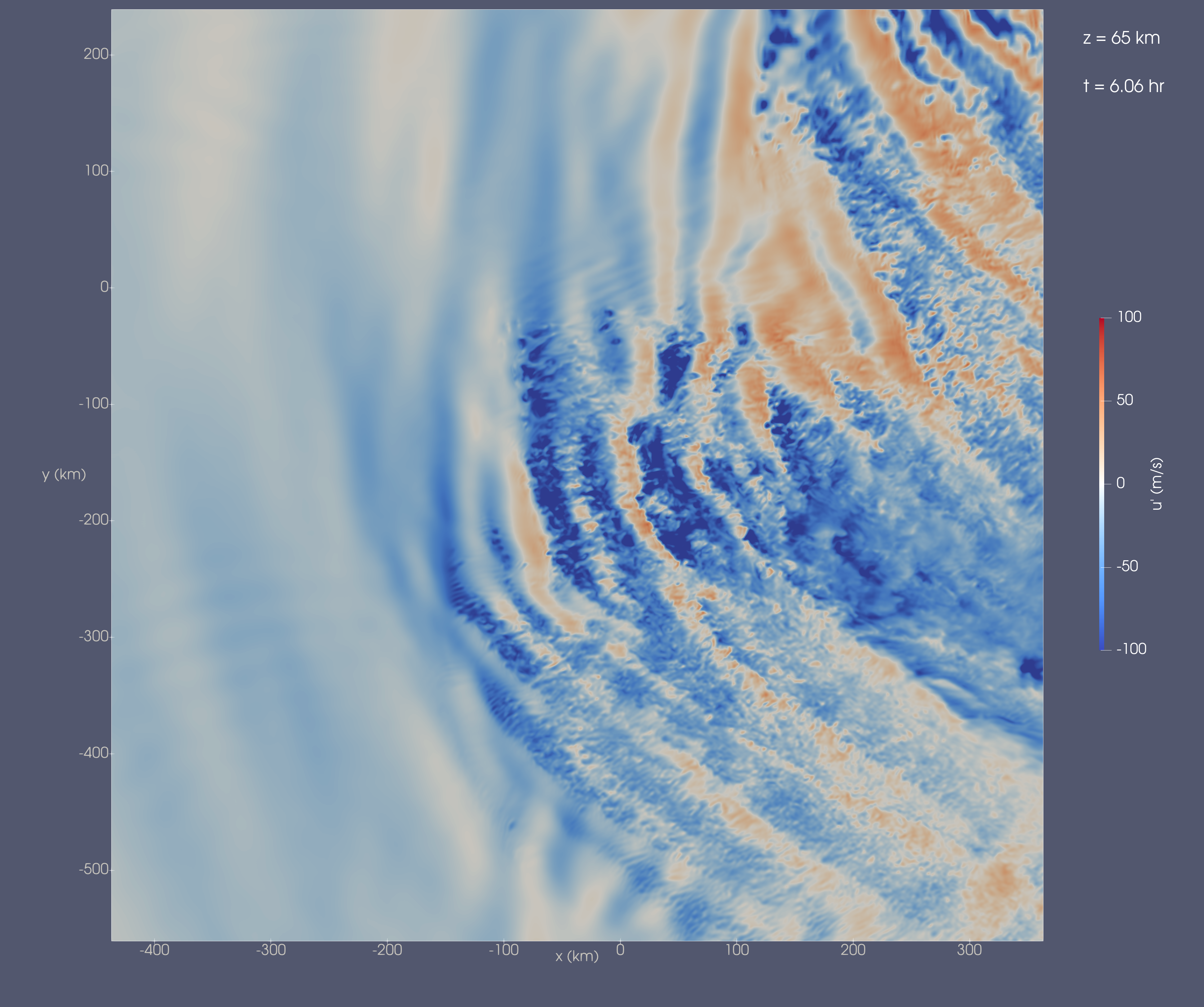

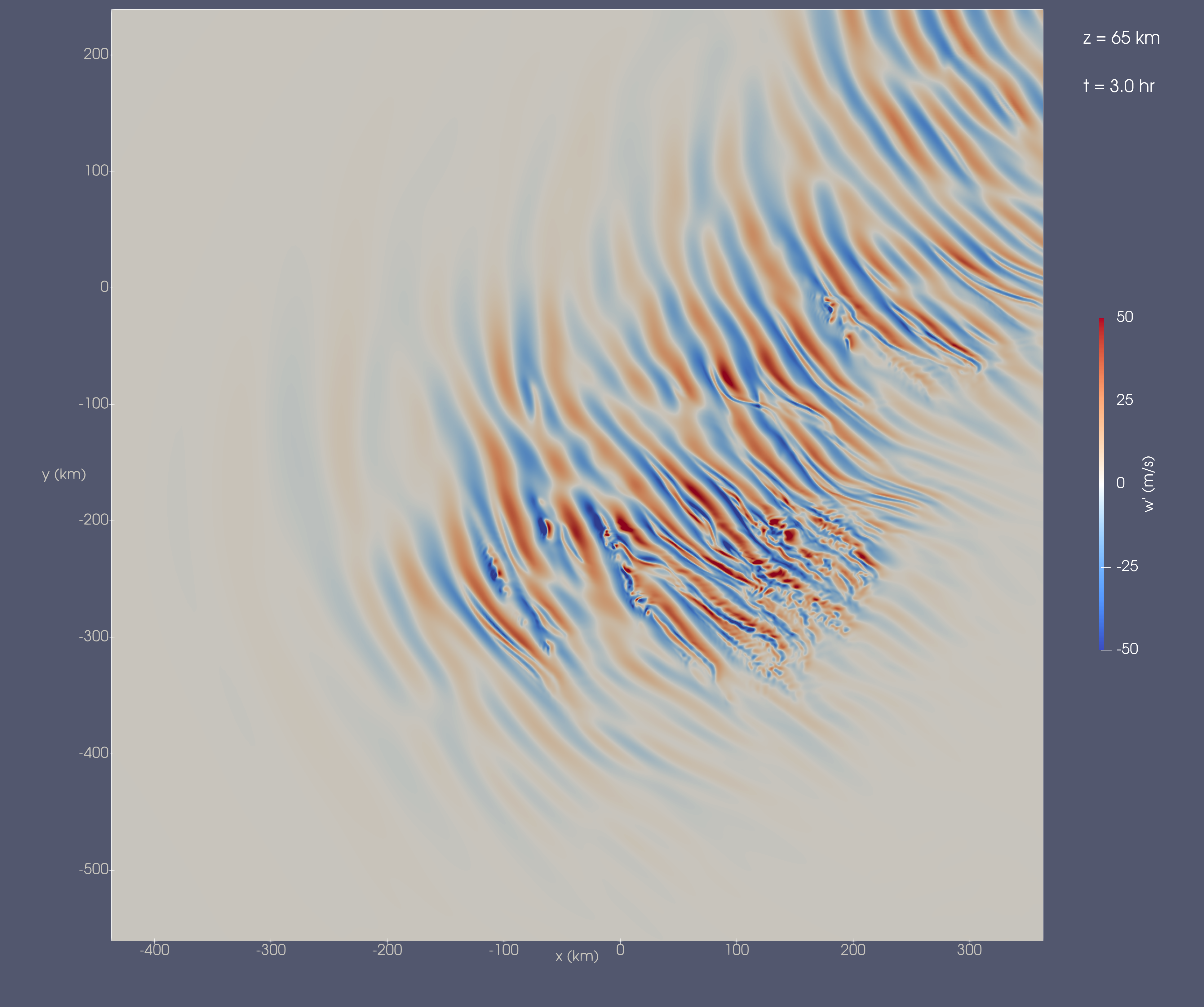



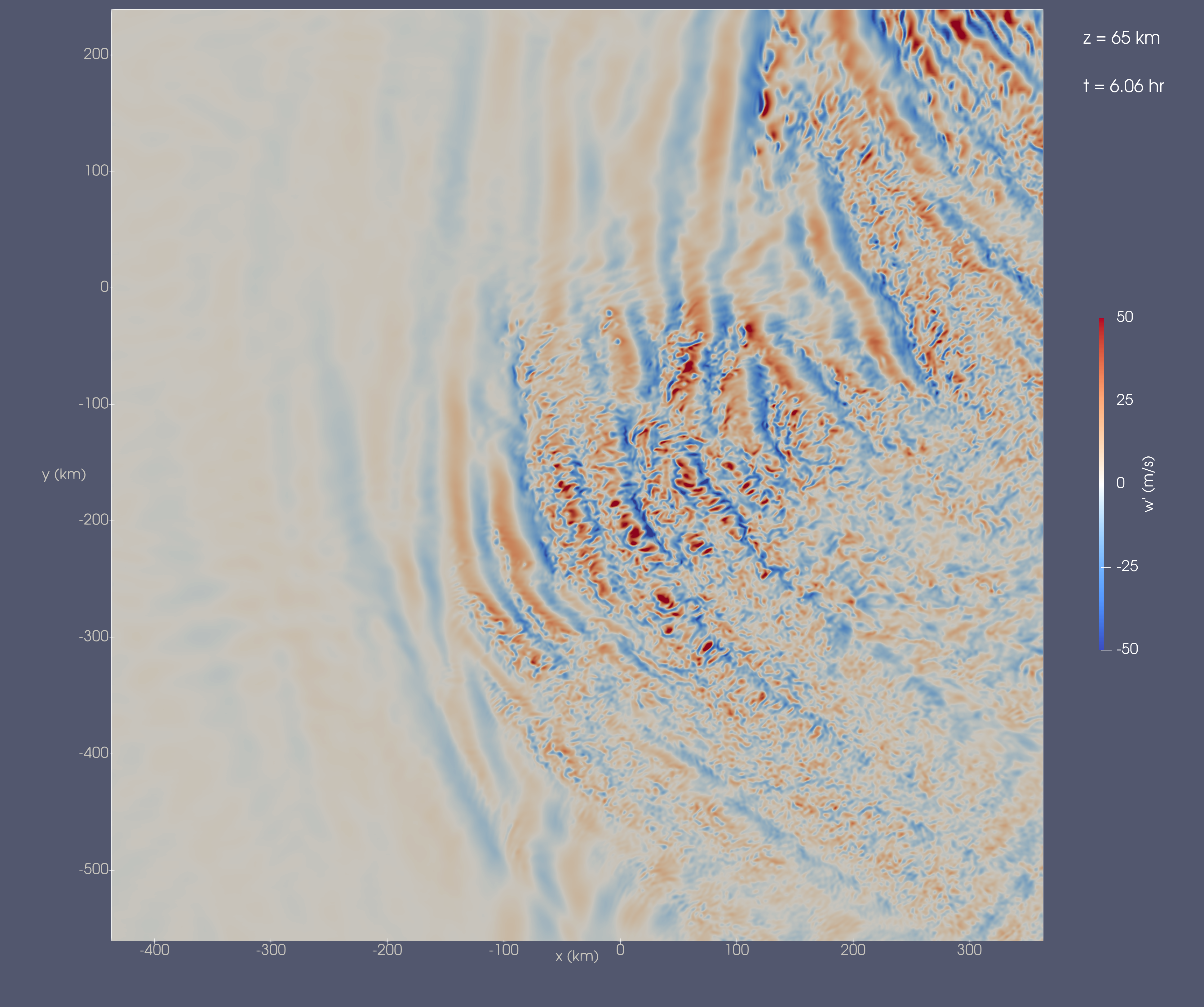










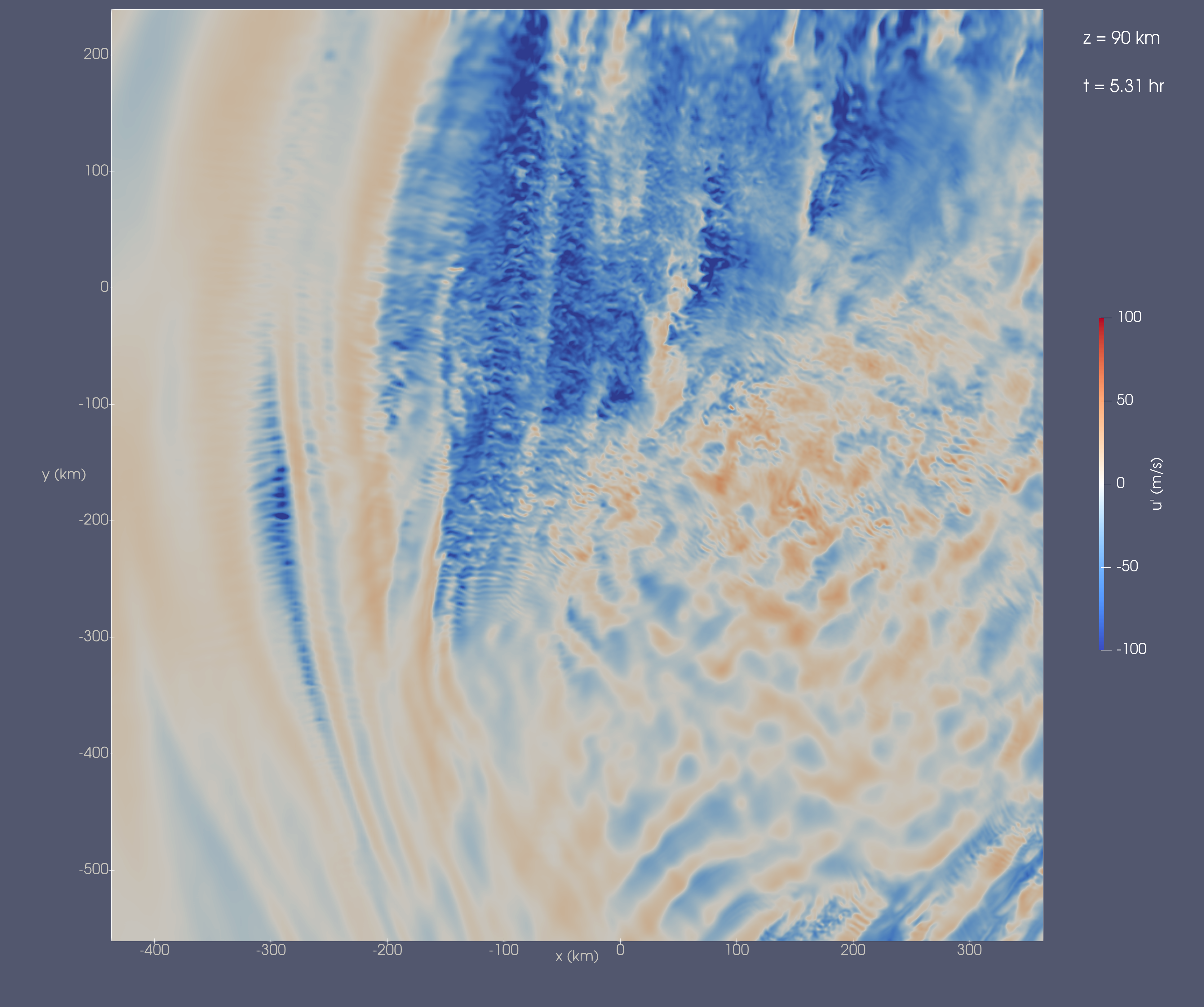
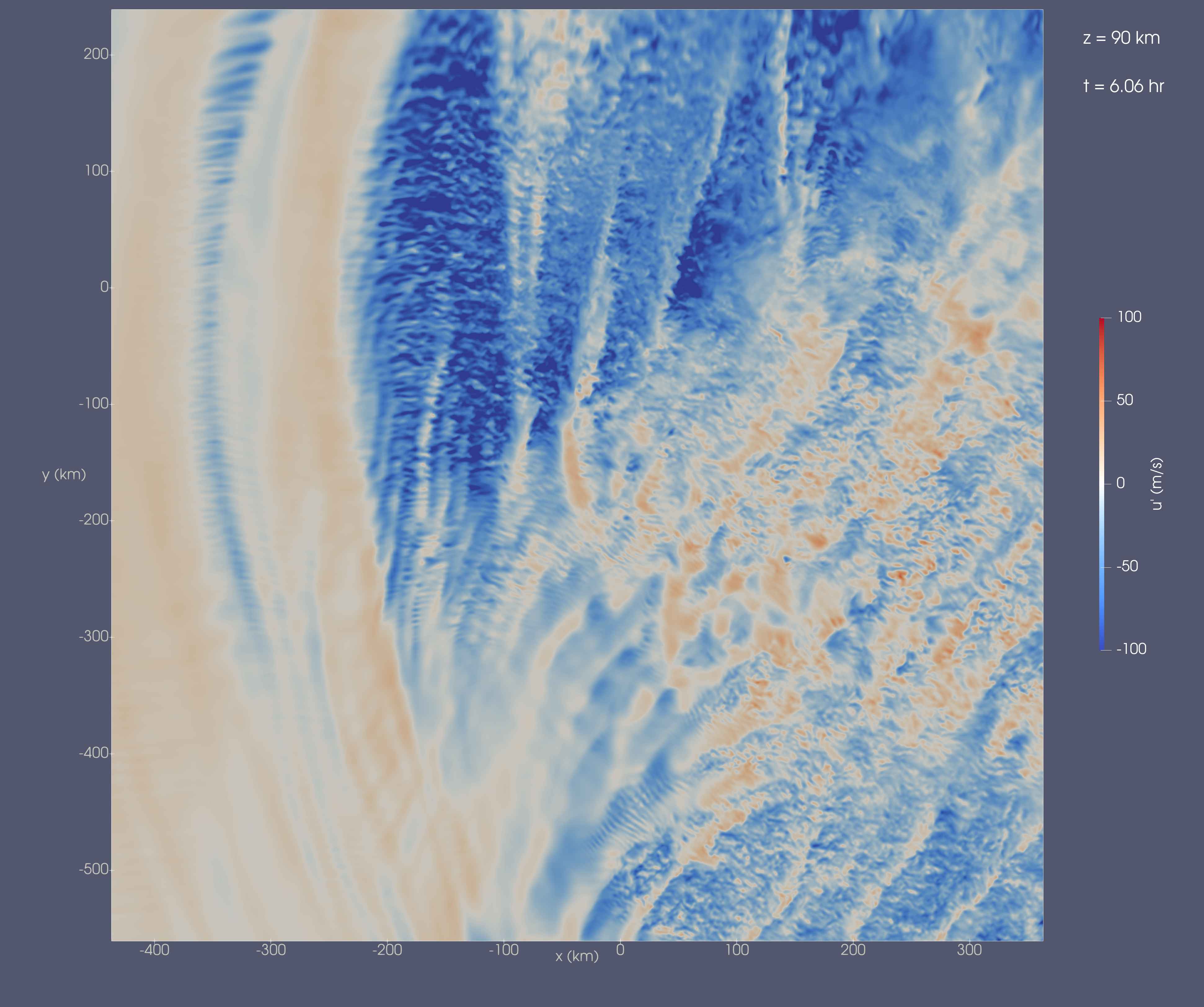








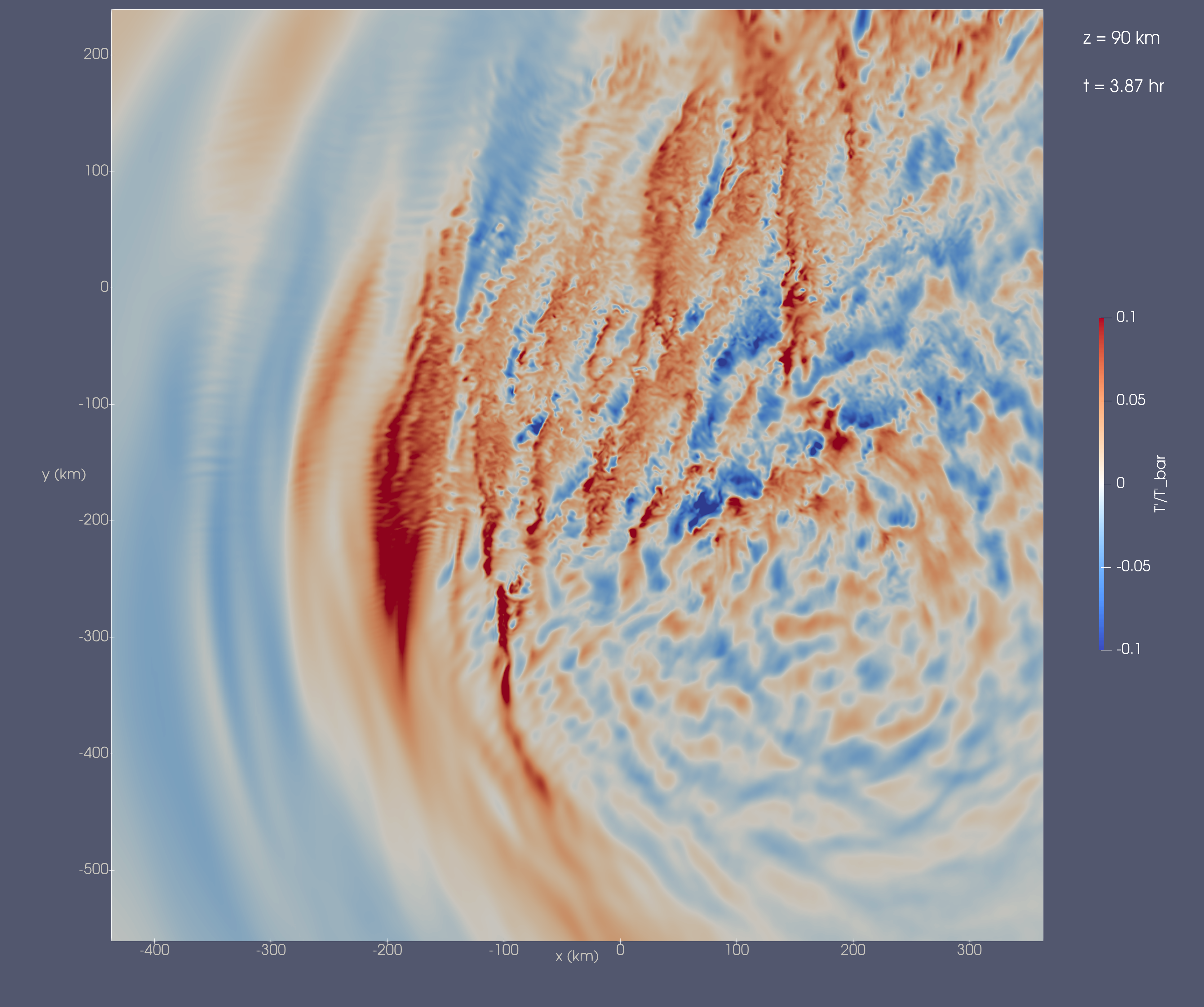




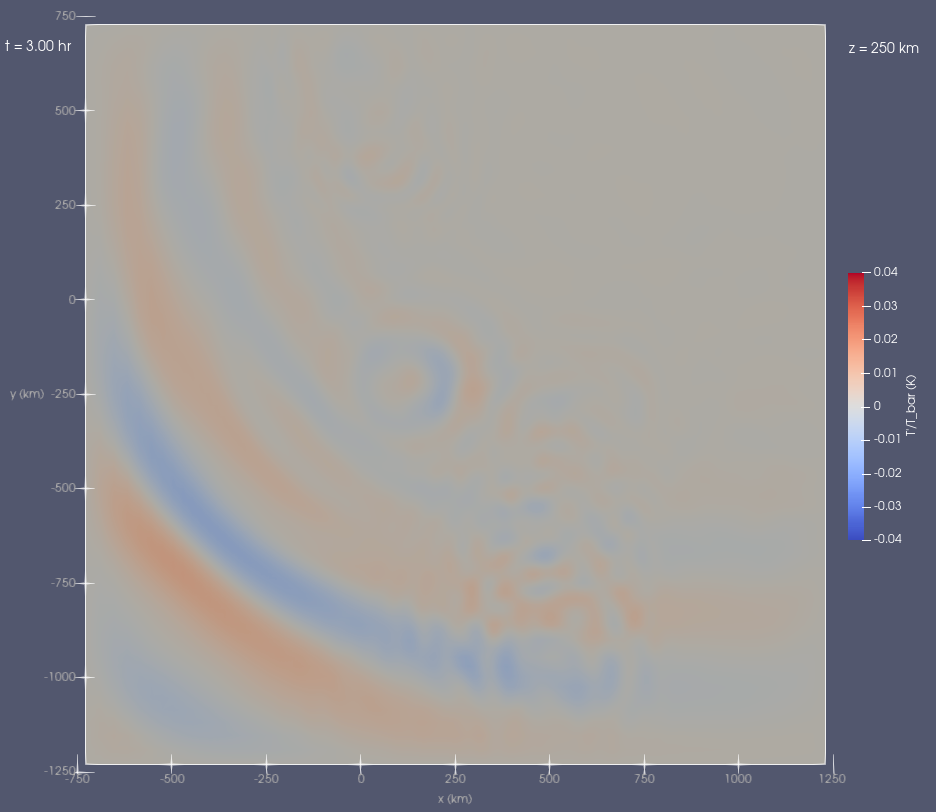









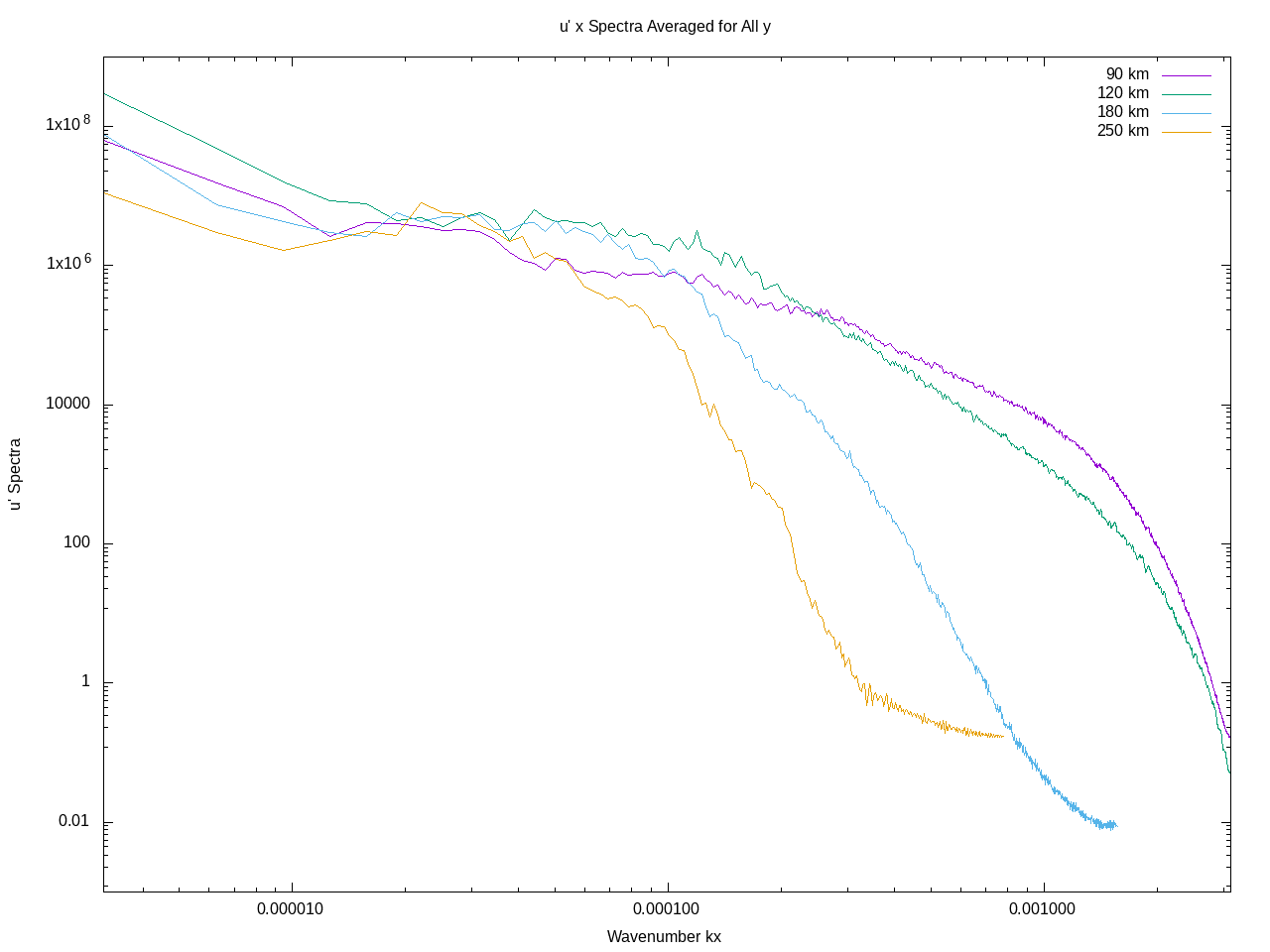

The following animations start at the end of the ramping period.
Results in xz plane
Results in an xy plane centered at Lauder (-36.8,-160.9)
u' at 65km






w' at 65km






T'/T'_bar at 65km






u' at 90km






w' at 90km






T'/T'_bar at 90km






Results in a high altitude xy plane






The Following Results are Taken at the Last Time Frame t~=6.83 hr




Averaged x Spectra

